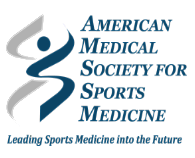 Sports injuries among children and teenagers are a major concern. Indeed, according to statistics published by the National Council of Youth Sports (NCYS), approximately 3.5 million youth sports injuries occur each year in the United States, with about one in three participants seeking medical attention for sports-related injuries. Fortunately, the NCYS has also reported that more than 50 percent of youth sports injuries are preventable.
Sports injuries among children and teenagers are a major concern. Indeed, according to statistics published by the National Council of Youth Sports (NCYS), approximately 3.5 million youth sports injuries occur each year in the United States, with about one in three participants seeking medical attention for sports-related injuries. Fortunately, the NCYS has also reported that more than 50 percent of youth sports injuries are preventable.
So, what can you do to keep your child safe in their chosen sport? Below are four helpful tips for how to prevent injuries in young athletes.
1. Attend a Sports Physical
Many sports teams require participants to attend a sports physical before each season starts. Unlike annual physicals—which are more comprehensive and take into account a child’s overall physical, developmental, emotional, and social health—sports physicals focus on determining whether the child is healthy enough to safely play the sport in question. Even if your child’s team doesn’t require these physicals, it’s a good idea to have one completed anyways.
2. Invest in the Right Protective Gear
Start by finding out what protective gear your child will need for their sport (your child’s coach could be a great resource for this information). If you can’t afford new equipment at the moment, consider buying used gear (although some pieces—like helmets—should never be purchased used). No matter where you buy the equipment from, double-check that it’s in good condition and that it fits your child well. And because even the best protective gear won’t do any good if it’s sitting at home or in a locker, make sure that your child actually uses the items during practices and games.
3. Focus on Nutrition & Hydration
Even if you’re not personally familiar with your child’s sport—and thus can’t offer advice on technique—you can still help protect them by making sure that they’re eating a well-balanced diet and drinking plenty of water. Feeding your child healthy carbohydrates, for example, can give them the energy they need during practice, and serving protein-rich foods will support muscle repair and growth. Keeping them hydrated can prevent muscle cramping and heat exhaustion, thereby also reducing their risk of a sports injury.
4. Encourage Openness & Honesty
One of the worst things you can do after sustaining a sports injury—or any other type of injury—is ignore it and play through the pain. Doing so can worsen the original injury and potentially lead to other complications. Unfortunately, young athletes are often hesitant to speak up about injuries because they don’t want to let down their team or get in trouble for complaining. So, let your child know that you always want them to tell you if they’re in pain or experiencing any other issues. And if your child does share that they’ve hurt themselves, be sure to promptly seek professional treatment.
Your Top Choice for Sports Injury Treatment in Tampa Bay
If you’re looking for further advice on how to prevent injuries in young athletes—or if your child has already sustained a sports injury and requires treatment—you can turn to Tampa Orthopaedic and Sports Medicine Group, a division of Florida Medical Clinic. Based in Tampa, Florida, we specialize in sports medicine and treat patients of all ages. Once we’ve learned about your child’s medical history, athletic involvement, and training goals, we’ll be able to supply you with customized recommendations.
Contact Tampa Orthopaedic and Sports Medicine Group today to schedule a consultation with one of the sports medicine specialists at our practice. We look forward to meeting with you and your child and helping them safely move forward with their athletic career.












